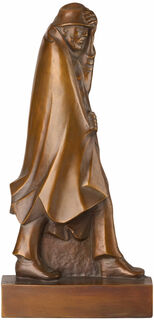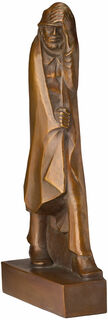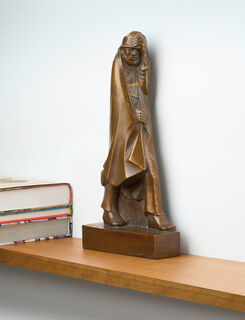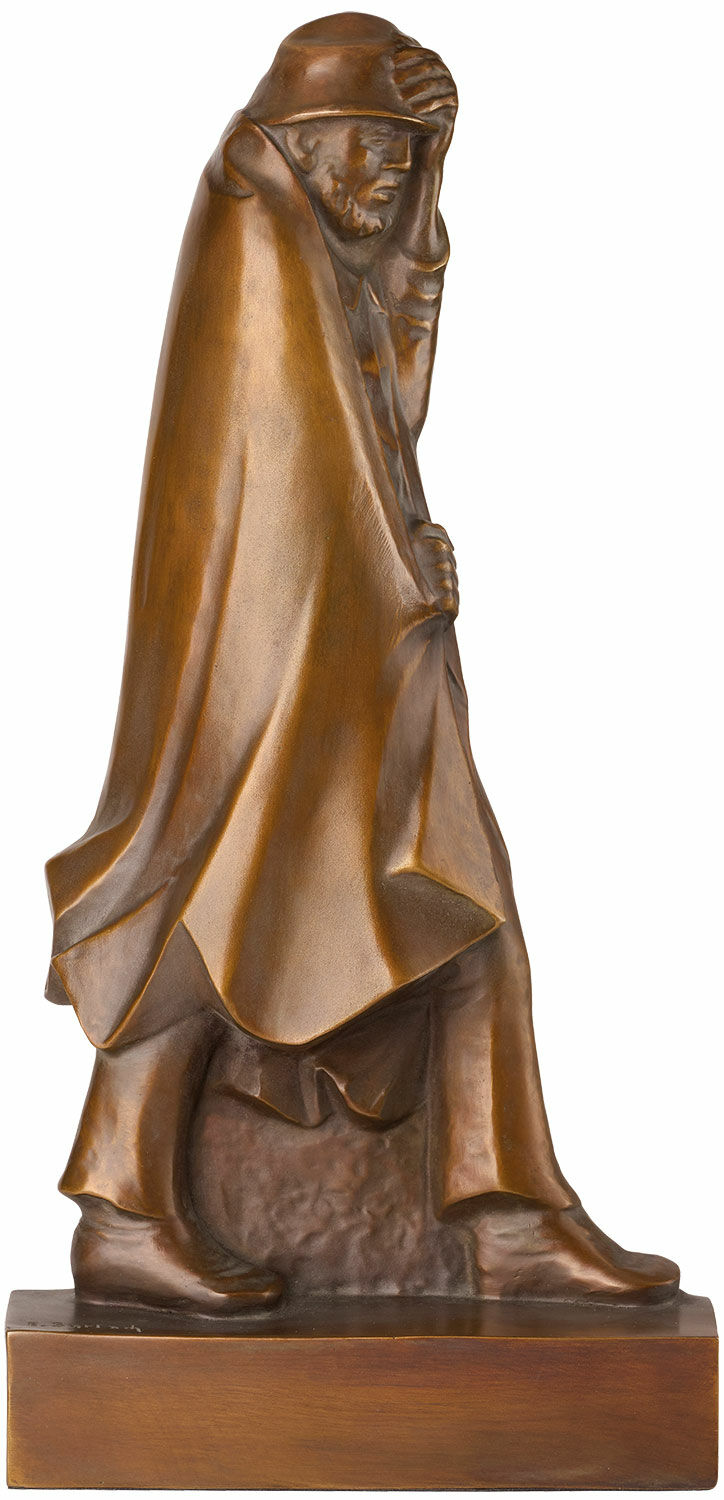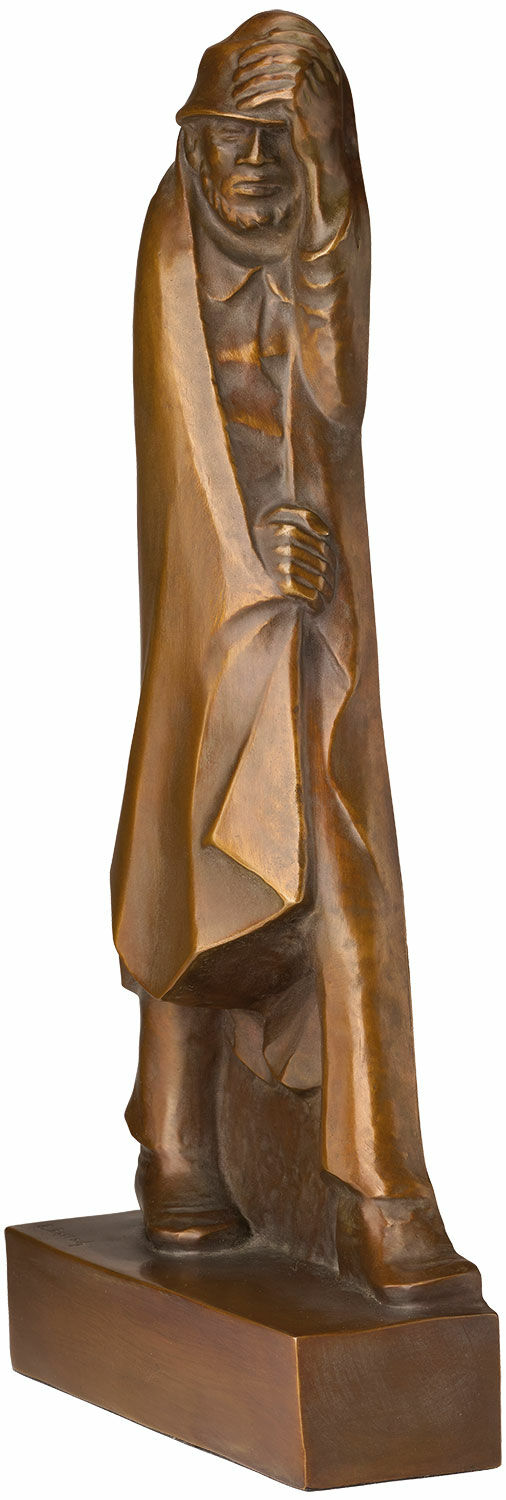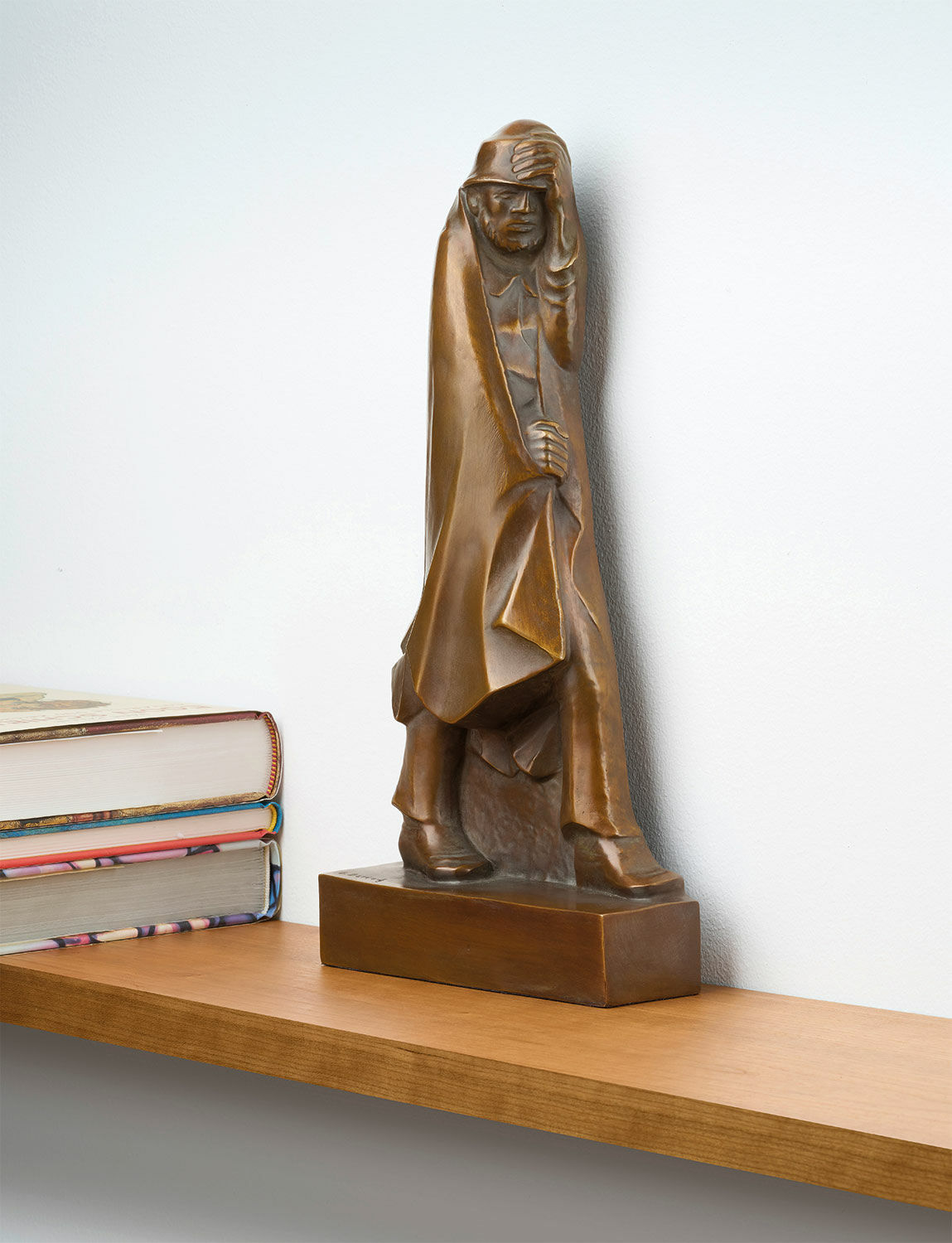Sculpture "Wanderer in the Wind" (1934), reduction in bronze
Sculpture "Wanderer in the Wind" (1934), reduction in bronze
Quick info
ars mundi Exclusive Edition | limited, 980 copies | numbered | signature | hallmarked | certificate | bronze | chiselled | polished | patinated | reduction | size 33 x 16 x 5 cm (h/w/d) | weight 2.6 kg
Video
Detailed description
Sculpture "Wanderer in the Wind" (1934), reduction in bronze
In 1934, Barlach created this impressive work titled "Wanderer in the Wind", which is one of his most significant, popular and best-described works. Throughout the decades of Barlach's oeuvre, the viewer is presented with the fate of human beings in characteristic, fundamental states of mind. All of his works are filled with deep thoughtfulness, compassionate humanity, reflection and contemplation.
Against the storm of the destruction of Barlach's works from 1934 onwards, the "Wanderer in the Wind" literally braces himself. The sculpture is based on a drawing made in 1927, which the artist faithfully reproduced. With his left hand, he holds onto the cap on his head, with his right hand he closes the cloak around his body. The left side view illustrates the dynamic forward movement through a drapery fold in the robe, highlighting the standing leg that provides the strength for the next step. The right side, with a pedestal and folds in the robe, is more still, more pensive as if the thoughts here were born of longing, compelling the necessity for departure.
The face of the wanderer and his expression are of particular significance. It shows a willingness to fight and determination. The sculpture becomes a monument to courage, resistance and self-confidence. The work "Wanderer in the Wind" is a desperately insistent commitment to freedom and resistance. This is what makes the work so exceptionally precious and, unfortunately, timeless in its relevance. (Dr Friedhelm Häring, former museum director and curator)
Fine bronze sculpture, cast using the Lost-Wax-Process and chiselled, polished and patinated by hand. Moulded from the original and reduced in size (reduction). Open back. Limited edition of 980 copies, individually numbered and with the signature "E. Barlach" taken from the original and the foundry mark. With numbered certificate of authenticity and limitation certificate. Size 33 x 16 x 5 cm (h/w/d). Weight 2.6 kg. ars mundi Exclusive Edition.
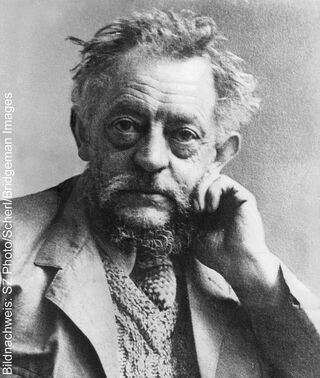
About Ernst Barlach
1870-1938, sculptor, writer and draughtsman
Ernst Barlach was born on January 2, 1870, in Wedel, Germany, and died on October 24, 1938, in Rostock, Germany. He holds an outstandingly special position within German Expressionism. As a graphic artist, draughtsman, writer and, in particular, a sculptor, Barlach created milestones in art history. Barlach's sculptural works of art have a special effect because they seek extreme experience of limits and their representation. They are works of multi-layered meaning with which he foregrounded the essence of the human being and that what stands above the self and the world.
Barlach's intention is rooted in the depths, the inner self. Shaped by war and challenging living conditions, he experiences both suffering and happiness. The human being is always the focus of his work: Ecce homo.
"I desire nothing more than to be a good and true artist as best I can. I believe that what cannot be expressed through the work can pass into the possession of another through forms. My pleasure and creative impulse continually revolve around the problems of the meaning of life and the other great mountains in the spiritual realm." (Ernst Barlach)
Ernst Barlach became an honorary member of the Academy of Fine Arts, Munich, in 1925. In 1933, he was appointed Knight of the Peace Class of the Order "Pour le mérite". In 1937, the National Socialists removed his works from public collections and spaces for being "degenerate art". Ernst Barlach died in Rostock on October 24, 1938.
Today, Ernst Barlach's works are an integral part of leading museums and collections and - if available - fetch record amounts at auction.
"The Singing Man" became Ernst Barlach's best-known sculpture, an icon of Modernism. It adorns illustrated books and posters worldwide, and the original edition is a permanent part of the collections of the world's major museums, including the Museum of Modern Art (MoMA) in New York.
An alloy of copper with other metals (especially with tin) used since ancient times.
When casting bronze, the artist usually applies the lost-wax technique which is dating back more than 5000 years. It's the best, but also the most complex method of producing sculptures.
First, the artist forms a model of his sculpture. It is embedded in a liquid silicone rubber mass. Once the material has solidified, the model is cut out. The liquid wax is poured into the negative mould. After cooling down, the wax cast is removed from the mould, provided with sprues and dipped into ceramic mass. The ceramic mass is hardened in a kiln, whereby the wax flows out (lost mould).
Now we finally have the negative form, into which the 1400° C hot molten bronze is poured. After the bronze had cooled down, the ceramic shell is broken off and the sculpture is revealed.
Now the sprues are removed, the surfaces are polished, patinated and numbered by the artist himself or, to his specifications, by a specialist. Thus, each casting becomes an original work.
For lower-quality bronze castings, the sand casting method is often used which, however, does not achieve the results of a more complex lost-wax technique in terms of surface characteristics and quality.
Graphic or sculpture edition that was initiated by ars mundi and is available only at ars mundi or at distribution partners licensed by ars mundi.
Term for an art object (sculpture, installation), which is produced in multiple copies in a limited and numbered edition according to the artist‘s will.
Artist's multiples have been called the most accessible and affordable art on the market.
A sculptural technique where the artwork is cut in from a stone or wooden surface and not modelled.
There are different degrees of relief depending on the degree of projection. The range includes low relief/bas-relief and high relief. The sunk relief is a common form of reliefs in Ancient Egypt, in which the depicted scenes were cut into the stone or wood surface.
Among the most famous reliefs are the works of the Florentine master Lorenzo Ghiberti. Among other artworks, he created the pair of gilded bronze doors of the Baptistery in Florence, called by Michelangelo the "Gates of Paradise".
A plastic work of sculptural art made of wood, stone, ivory, bronze or other metals.
While sculptures from wood, ivory or stone are made directly from the block of material, in bronze casting a working model is prepared at first. Usually, it is made of clay or other easily mouldable materials.
The prime time of sculpture after the Greek and Roman antiquity was the Renaissance. Impressionism gave a new impulse to the sculptural arts. Contemporary artists such as Jorg Immendorf, Andora, and Markus Lupertz also enriched sculptures with outstanding works.

